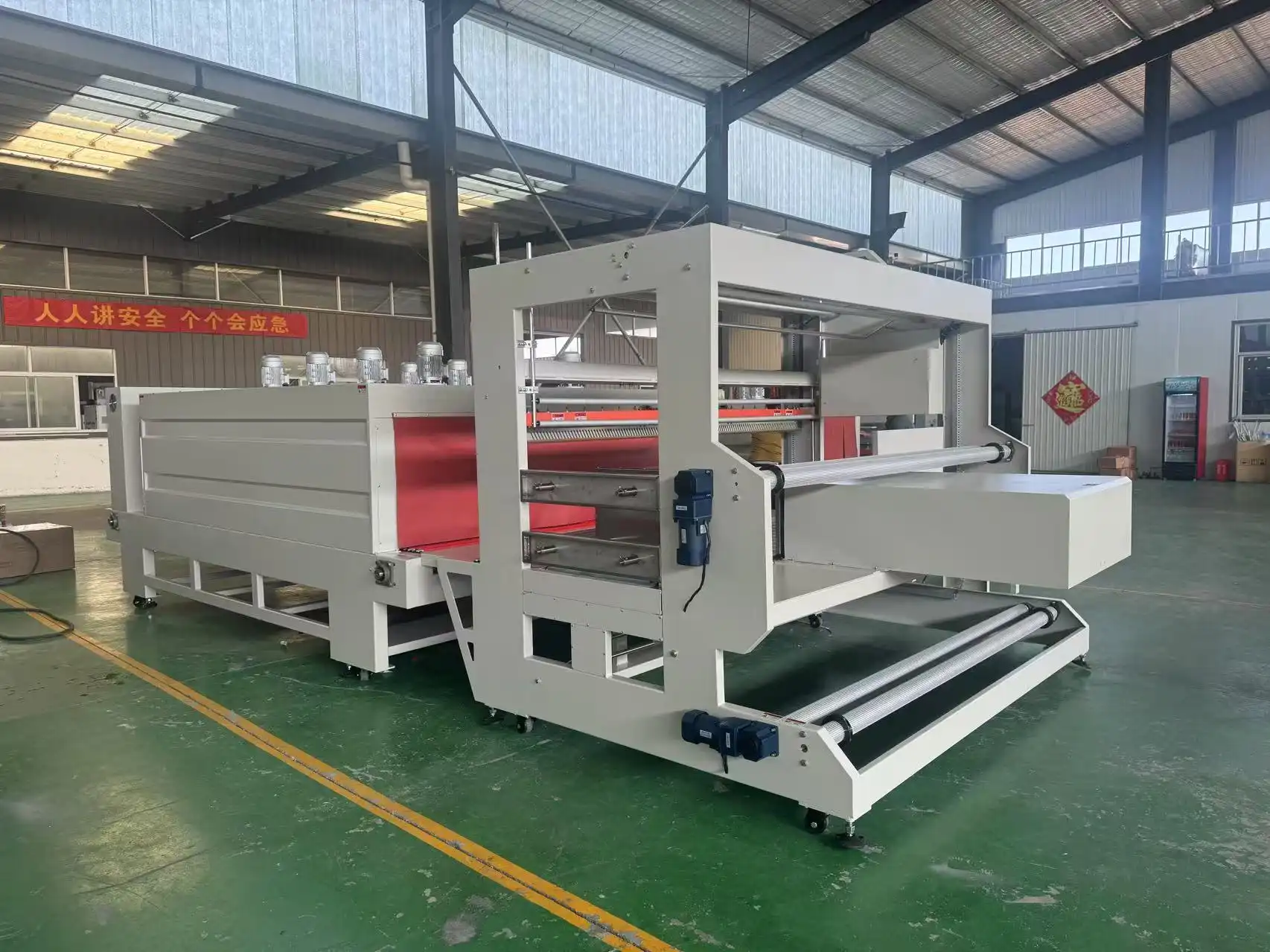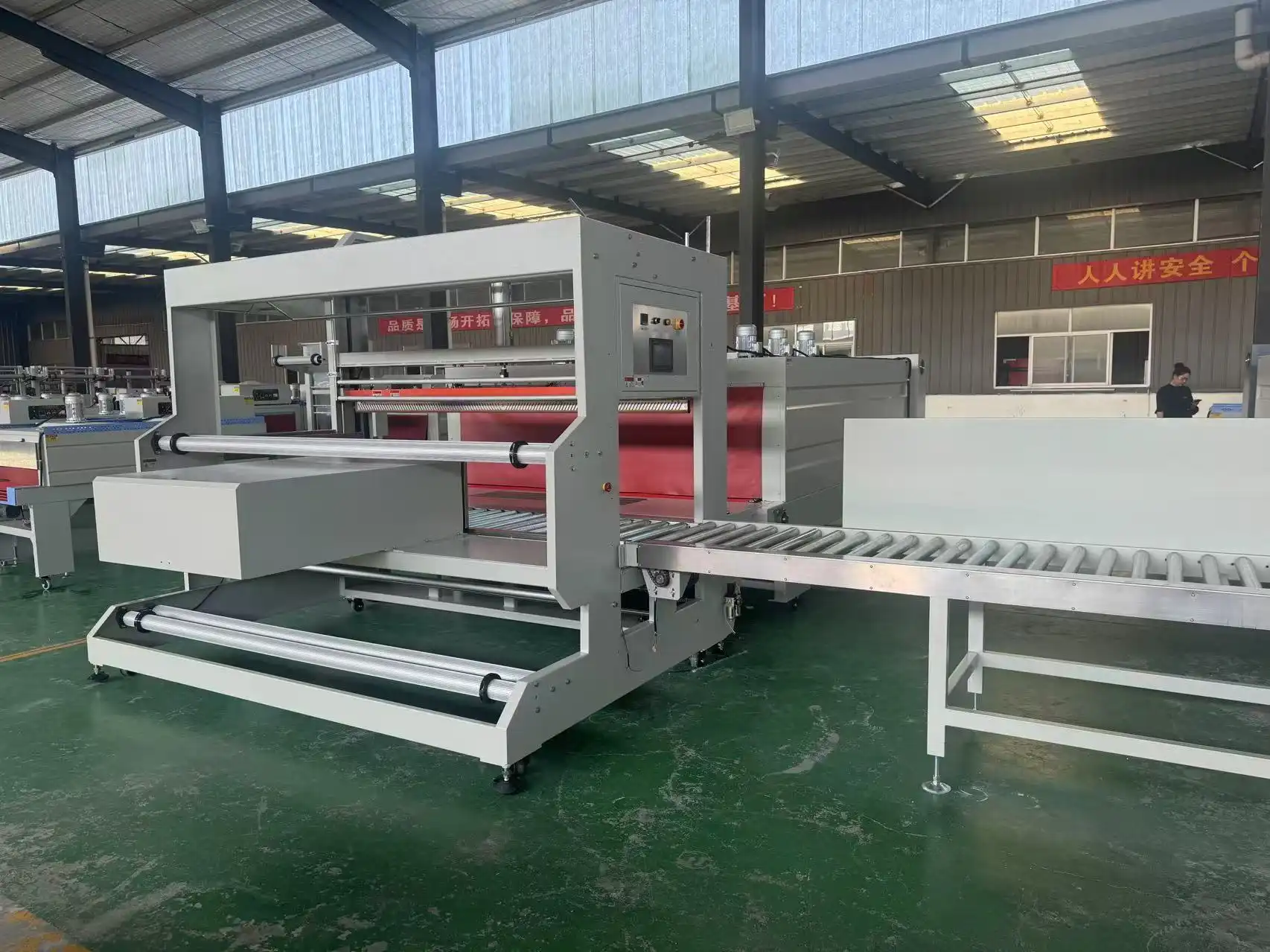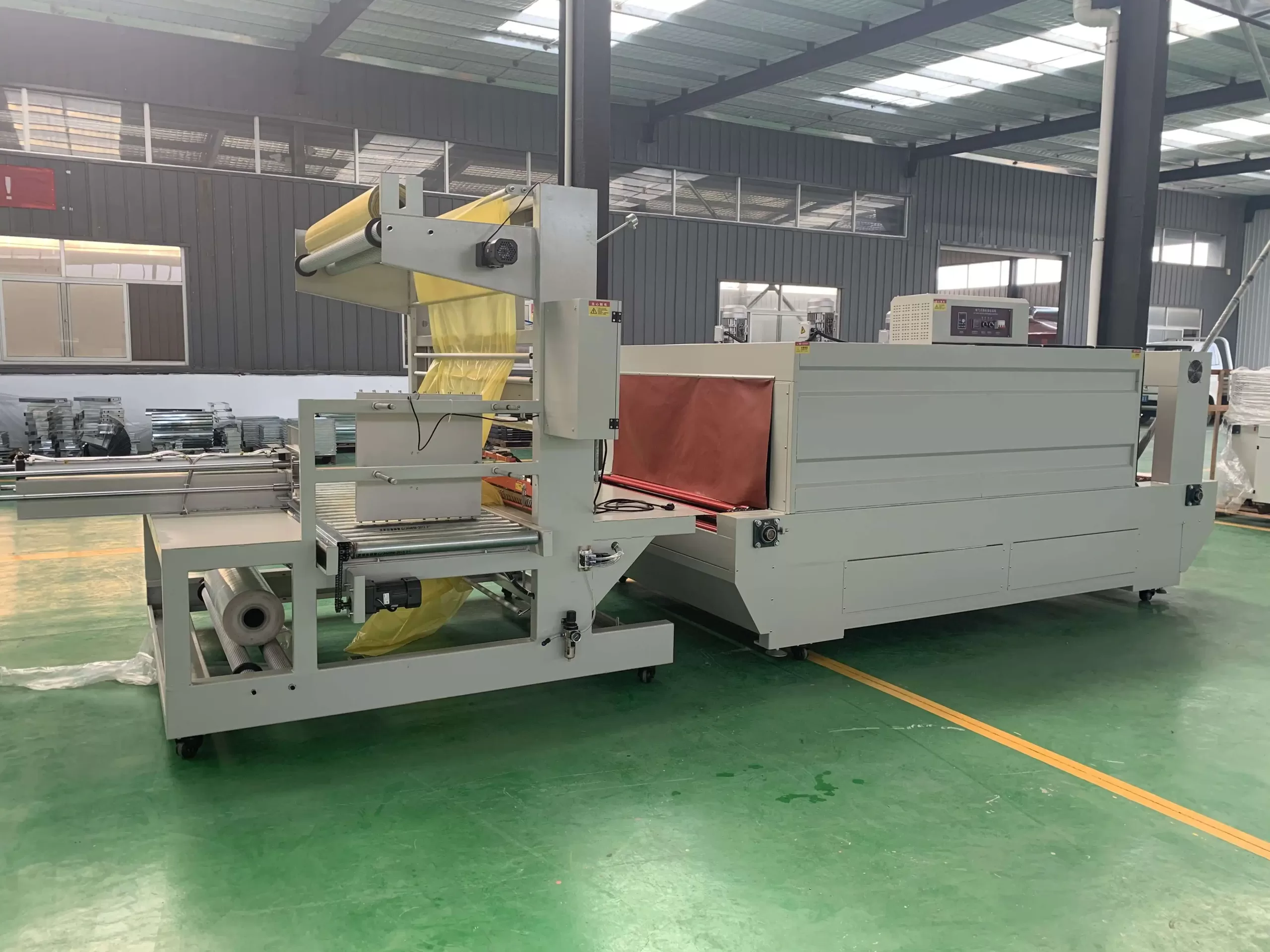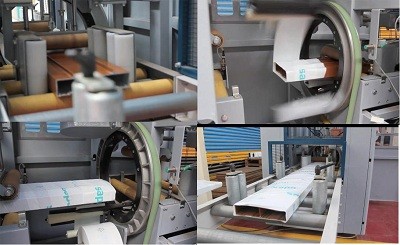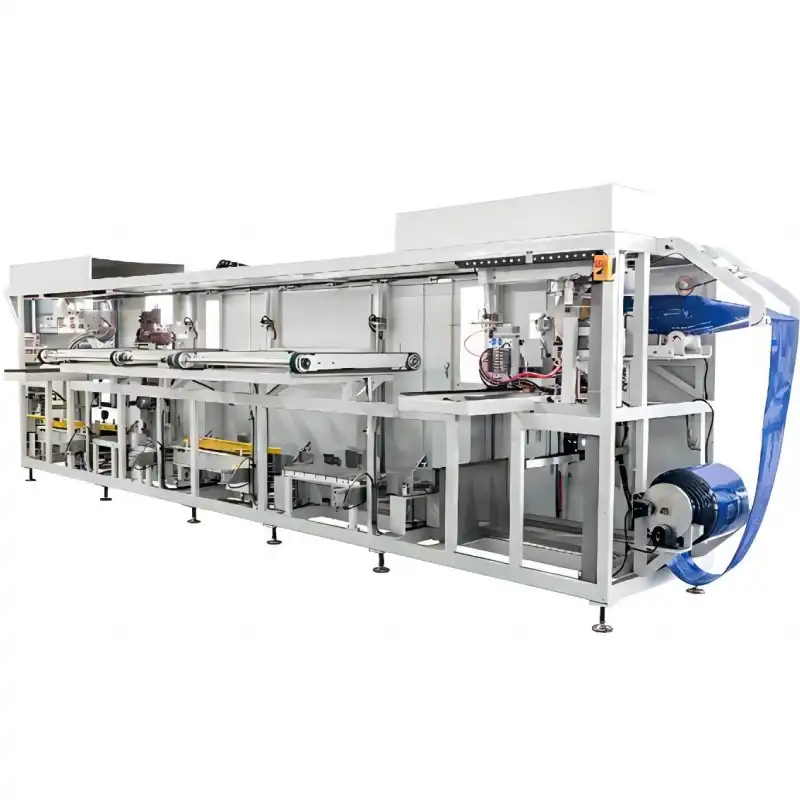Panel Shrink Packing Machine: Revolutionizing Packaging Efficiency
Packaging has come a long way since the early days when everything had to be done manually. With advancements in technology, industries have been able to automate and streamline their processes, making packaging faster, more efficient, and cost-effective. One such innovation is the panel shrink packing machine, which is becoming an essential tool for industries worldwide. By reducing the time and labor involved in packaging, this machine provides a high degree of automation, which helps businesses scale operations without compromising on quality.
1. What Makes the Panel Shrink Packing Machine Unique?
1.1 Benefits of Automation in Packaging
The shift toward automation in packaging has made a profound impact on industries looking to stay competitive. Unlike traditional methods, the panel shrink packing machine operates on automated processes, which can drastically reduce the manual labor involved in wrapping each product. For manufacturers, this means faster production times, a reduction in human error, and an overall increase in productivity. With automation, products are wrapped uniformly, ensuring consistency and a high-quality finish that would be difficult to achieve manually.
1.2 Types of Panels Suitable for Shrink Packing
Panel shrink packing machines are versatile and can handle various types of panels, from smaller, lightweight pieces to heavy-duty materials. These machines are perfect for wrapping everything from wooden panels, insulation boards, glass sheets, and even metal panels. Depending on the type of product, adjustments can be made to ensure the right level of shrinkage and seal quality. The diverse application range means that businesses across industries such as construction, furniture manufacturing, and electronics can benefit from the use of these machines.
|
Panel Type
|
Application
|
Shrink Wrapping Benefits
|
|
Wooden Panels
|
Furniture, Flooring, Doors
|
Protection from moisture and dust
|
|
Glass Sheets
|
Windows, Mirrors
|
Prevents scratches and breakage
|
|
Metal Panels
|
Construction, Industrial Use
|
Durable, tamper-proof seal
|
|
Insulation Boards
|
Construction Materials
|
Protection during transport
|
|
Plastic Sheets
|
Packaging, Storage
|
Uniform shrinkage for neat finish
|
1.3 The Shrink Wrapping Process
The process of shrink wrapping involves the use of heat to shrink a plastic film tightly around a product. For panels, the machine works by placing the panel on a conveyor belt, feeding it through the shrink tunnel, where heat is applied. The film contracts, molding to the shape of the item, ensuring a tight and secure wrap. This provides a level of protection against dust, dirt, and moisture while giving products a professional, polished appearance. The entire process is fast and can be adjusted for various panel sizes, making it a reliable option for manufacturers with varying product lines.
2. How Does a Panel Shrink Packing Machine Compare to Other Packaging Methods?
2.1 Advantages Over Traditional Packaging Methods
When comparing the panel shrink packing machine to traditional manual wrapping techniques or even semi-automatic systems, the difference in efficiency is stark. Traditional packaging methods often require more labor, which leads to slower production times, more errors, and inconsistent wrapping results. With a shrink packing machine, businesses can automate the entire wrapping process, ensuring that each panel is sealed uniformly and securely. This efficiency not only improves output but also reduces the risk of damage, which can occur during manual handling.
2.2 Shrink Packing Machines vs. Stretch Wrapping
While shrink wrapping is often compared to stretch wrapping, there are several key differences. Stretch wrapping involves the application of elastic film around a product, but it doesn’t provide the same level of tightness or protection that shrink wrapping does. Shrink wrap molds to the shape of the product, offering a tighter, more secure fit, which is especially important for irregularly shaped or delicate panels. Stretch wrapping, on the other hand, can sometimes result in loose ends or air pockets, leaving the product more vulnerable to external elements.
|
Factor
|
Shrink Wrapping
|
Stretch Wrapping
|
|
Fit
|
Tight, molded fit
|
Loose fit, sometimes uneven
|
|
Protection
|
Excellent protection from dust, dirt, and moisture
|
Less protection, mainly for stability
|
|
Suitability
|
Ideal for fragile, irregular-shaped items
|
Suitable for uniform, bulk items
|
|
Efficiency
|
Faster for high-volume, complex products
|
Slower for varied item shapes
|
|
Cost
|
Higher initial investment
|
Lower initial investment
|
2.3 The Cost of Panel Shrink Packaging
The investment in a panel shrink packing machine may seem significant upfront, but when you factor in labor costs, time savings, and the reduction in product damage, it becomes clear that the long-term benefits far outweigh the initial expenditure. Additionally, the machine's ability to run 24/7 without the need for breaks or shift changes makes it an ideal choice for businesses with high production volumes. Over time, this translates to cost savings and increased profitability, as packaging becomes more efficient and reliable.
3. What Factors Should You Consider Before Buying a Panel Shrink Packing Machine?
3.1 Size and Scale of Your Production
When considering the purchase of a panel shrink packing machine, the first thing to evaluate is the scale of your production. Larger production lines may require a more robust machine capable of handling high volumes, while smaller manufacturers may benefit from a more compact, cost-effective option. Machines vary in size, and choosing the right one for your production needs is essential to ensuring efficiency. Some machines are designed to handle larger panels, while others cater to smaller, more delicate items. Additionally, consider whether the machine can be easily scaled up if your production needs increase.
|
Production Size
|
Machine Type
|
Key Feature
|
|
Small to Medium Scale
|
Compact Shrink Machines
|
Space-saving design, fast setup
|
|
Large Scale Production
|
Heavy-duty Shrink Machines
|
High throughput, adjustable settings
|
|
Diverse Product Range
|
Multi-purpose Shrink Machines
|
Adaptable to various panel sizes
|
3.2 Speed and Efficiency Requirements
Another important consideration is the speed and efficiency required by your production line. Panel shrink packing machines vary in their speed, with some capable of wrapping dozens of panels per minute, while others are slower but provide more precision for delicate items. It's important to assess how many panels you need to wrap per hour or day, and choose a machine that can keep up with your required production rate. For high-demand environments, machines with faster cycle times are crucial for maintaining workflow.
3.3 Ease of Operation and Maintenance
Ease of use is a crucial factor for many businesses when choosing equipment. A machine that’s difficult to operate or requires extensive maintenance may lead to delays and disruptions in production. Look for a panel shrink packing machine that offers user-friendly controls, easy setup, and low maintenance needs. Machines that come with automation features like automatic film cutting or adjustable temperature settings can streamline the process and make it simpler for operators to manage.
